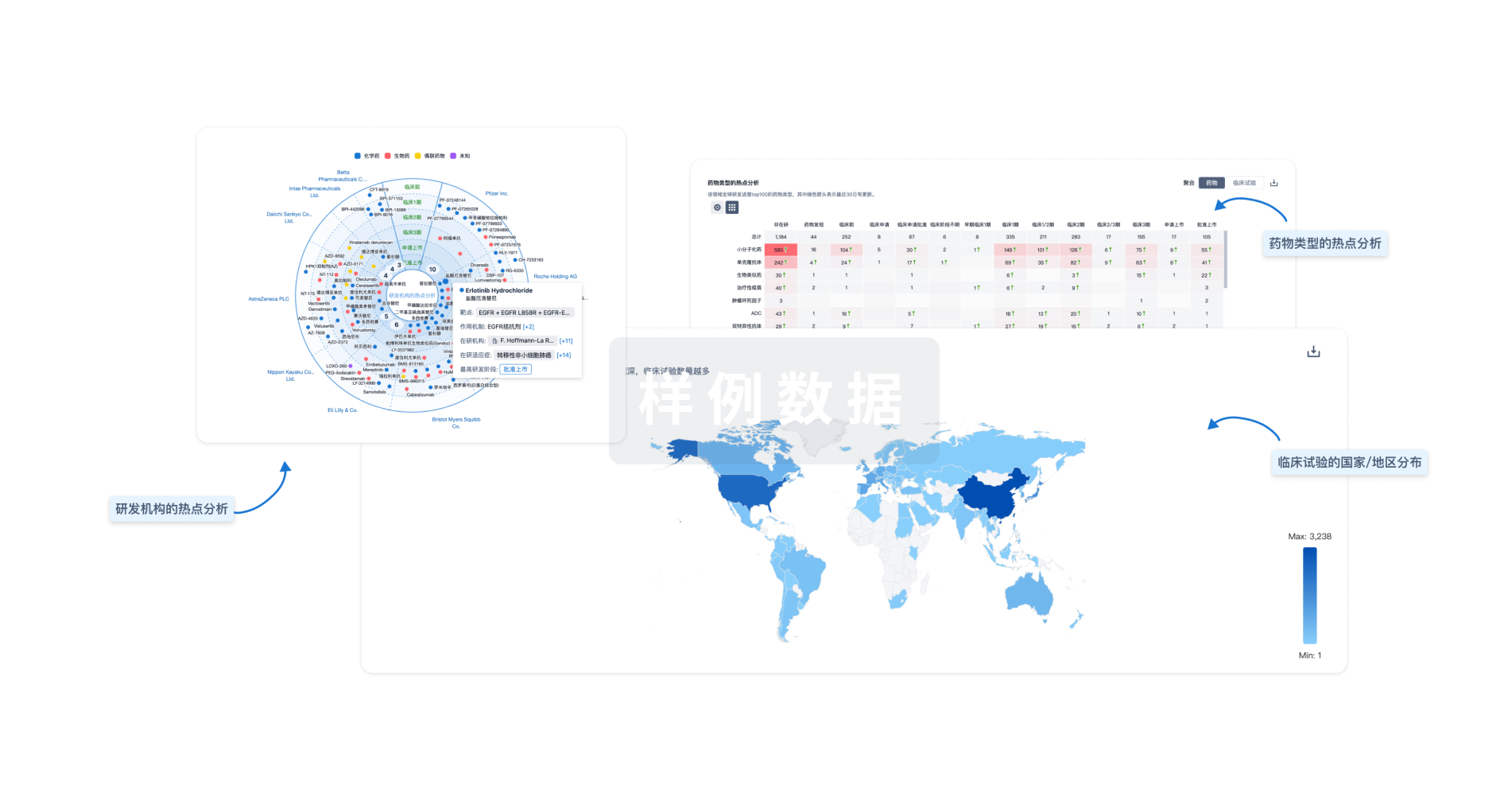预约演示
更新于:2025-05-07
Waterborne Diseases
水介传染病
更新于:2025-05-07
基本信息
别名 Disease, Waterborne、Diseases, Waterborne、Water-borne infectious disease + [6] |
简介 Illnesses due to micro-organisms and chemicals in drinking water, those caused by organisms having part of their lifecycle in water or those with water-related vectors, and others spread by aerosols containing pathogens. |
关联
13
项与 水介传染病 相关的临床试验NCT06149715
Evaluating Comparative Efficacy of Sawyer PointOne Filter Types in Ciudad Victoria, Mexico
This study measures effects of water filters and filter types on household health in Ciudad Victoria, Mexico.
开始日期2024-01-20 |
申办/合作机构 |
NCT05766826
Scaling up Coupons for Safe Water Treatment in Kenya
Guaranteeing access to safe drinking water is still a challenge in rural households in developing countries, and unsafe water sources are responsible for millions of deaths each year around the world. Coupons for free dilute chlorine solution are a cost-effective and effective way of ameliorating child health and reducing diarrhea incidence. It is still an empirical challenge, however, to see if the positive health effects will be maintained when the program is implemented at scale. In this study, investigators conduct a randomized controlled trial (RCT) at scale to study the impacts of a chlorine coupon program implemented at health clinics on child health, including self-reported diarrhea, fever, and cough incidence in the previous two weeks. Investigators further investigate the pathway of the impact, such as self-reported and objectively measured use of chlorine and frequency of visits to health clinics.
开始日期2023-02-21 |
申办/合作机构 |
NCT04826991
Wells and Enteric Disease Transmission - A Randomized Trial of Children Supplied Drinking Water From Private Wells (WET-Trial)
Approximately 40 million people in the US are served by private, and frequently untreated, wells. Our best estimate is that 1.3 million cases of gastrointestinal illnesses (GI) per year are attributed to consuming water from untreated private wells in the US, but in reality, there are no robust epidemiological data that can be used to estimate cases of GI attributable to these sources. We propose the first randomized controlled trial (RCT) to estimate the burden of GI associated with private well water. We will test if household treatment of private well water by ultraviolet light (UV) vs. sham (inactive UV device) decreases the incidence of GI in children under 5. We will also examine the presence of viral, bacterial, and protozoan pathogens in stool and well water from participants. These data will fill a knowledge gap on sporadic GI associated with federally-unregulated private water supplies in the US.
开始日期2021-07-01 |
申办/合作机构 |
100 项与 水介传染病 相关的临床结果
登录后查看更多信息
100 项与 水介传染病 相关的转化医学
登录后查看更多信息
0 项与 水介传染病 相关的专利(医药)
登录后查看更多信息
1,917
项与 水介传染病 相关的文献(医药)2025-08-01·Reproductive Toxicology
Exposure to disinfection by-products and risk of diminished ovarian reserve: Case-control evidence and cellular metabolomic insights
Article
作者: Fang, Ying ; Zhao, Xuehan ; Tian, Yichang ; Wang, Zelin ; Wu, Jiaqi ; Wang, Cong ; Wang, Qin ; Zhang, Jing ; Yang, Xiaokui ; Yang, Yi
2025-07-01·Journal of Hazardous Materials
pH-Adaptable CuO2 photo-responsive oxidase with phage-lysed β-galactosidase based cascade reaction for colorimetric detection of Escherichia coli in drinking water with high specificity and sensitivity
Article
作者: Zeng, Qin ; Wu, Huiyun ; Deng, Chunyan ; Yang, Yuan ; Jiang, Zhizhong ; Yang, Minghui ; Wu, Wuming ; Deng, Tingliu
2025-06-01·Environmental Pollution
Modelling Escherichia coli concentrations: 45.6 %–78.1 % of China's rivers show poor microbial water quality
Article
作者: Hofstra, Nynke ; Mei, Songtao ; Schmitt, Heike ; Wang, Kai
22
项与 水介传染病 相关的新闻(医药)2024-08-29
WASHINGTON, Aug. 29, 2024 /PRNewswire/ -- The federal General Services Administration (GSA) is making water management at government buildings a priority in 2024, and while it is a good first step, the only way to truly prevent Legionnaires' Disease is to address the problem at its source, according to the Alliance to Prevent Legionnaires' Disease (APLD). Legionnaires' disease is waterborne disease caused by the bacteria legionella, which leads to a severe form of pneumonia that can be deadly for approximately 1-in-10 individuals who are infected. Those most susceptible include the elderly, smokers, those who are immunocompromised, and individuals with lung and respiratory conditions.
GSA testing found higher than normal levels of legionella at the Centers for Medicare and Medicaid Services (CMS) building in Baltimore, Maryland, and closed the building in June 2023. It only recently reopened. Officials at the Social Security Administration building, about 2.5 miles away from the CMS building in Baltimore, have turned off about 20 water fixtures due to the presence of elevated levels of legionella. This year alone, numerous GSA buildings tested positive and notified workers of the risks associated with the bacteria in the water systems. Consequently, Iowa Senator Joni Ernst is demanding EPA act, stating "We cannot allow another Flint water crisis to occur inside federal buildings."
"We applaud the GSA's proactive approach to dealing with the presence of legionella in the water supply at federal government buildings," said Tonya Winders, Alliance to Prevent Legionnaires' Disease Executive Director. "Building water management and public notification are good first steps for controlling Legionnaires' disease, but the next step is to expand the investigation and tackle the problem at its source, which is the potable water coming into our homes, facilities and offices."
Winders said the key to prevention is effective public water system monitoring, management and treatment. Specifically, it is imperative to:
Maintain an adequate disinfectant residual at all points in the public water distribution system
Monitor and properly manage water quality from the public drinking water supply and distribution system
Increase infrastructure investment
Investigate all cases of legionellosis comprehensively including single cases and outbreaks
Positively identify the source of legionella bacteria after comprehensive investigation
Manage building water systems according to best practices per ASHRAE standard 188
"Legionnaires' Disease is preventable, but it requires a proactive, holistic approach to water management," Winders said. "If we are going to truly stop Legionnaires' disease infections, we need to go beyond just investigating buildings and expand the prevention efforts to include the water supply and distribution systems bringing water to our homes and offices."
For more information on Legionnaires' Disease and the Alliance to Prevent Legionnaires' Disease, visit: .
SOURCE Prevent Legionnaires'
2024-03-20
Infectious diseases specialists call the medical field to be ready to deal with the impact of climate change on spreading diseases, such as malaria, Valley fever, E. coli and Lyme disease.
A team of infectious diseases experts called for more awareness and preparedness in the medical field to deal with the impact of climate change on the spread of diseases. Their article, published today in JAMA raises the alarm about the emergence and spread of harmful pathogens. The authors also urge the medical community to update their education and training and take steps to combat global warming.
"Clinicians need to be ready to deal with the changes in the infectious disease landscape," said lead author George R. Thompson. Thompson is a professor at the UC Davis School of Medicine in the Department of Internal Medicine, Division of Infectious Diseases, and the Department of Medical Microbiology and Immunology. "Learning about the connection between climate change and disease behavior can help guide diagnoses, treatment and prevention of infectious diseases."
Thompson encouraged physicians and practitioners to maintain "a high index of suspicion of diseases on the move." "I think with improvements in our understanding of the disease, there will be more testing and we'll miss fewer cases that way," he said.
Changing infectious diseases landscape
Infectious diseases can be caused by viruses, bacteria, fungi or parasites. Many of these diseases are transmitted from animal to human or from human to human.
One type of infectious disease is vector-borne diseases. They are caused by pathogens carried by vectors like mosquitoes, fleas and ticks. Some diseases caused by vectors aredengue, malaria and Zika.
Changing rain patterns are expanding vectors' range and their active periods. Shorter, warmer winters and longer summers are also linked to more vector-borne diseases. For example, diseases caused by ticks (like babesiosis and Lyme disease) are now occurring in the winter too. They're also being found in regions farther west and north than in the past.
"We're seeing cases of tick-borne diseases in January and February," said first author of the study Matthew Phillips. Phillips is an infectious diseases fellow at Massachusetts General Hospital and Harvard Medical School. "The tick season is starting earlier and with more active ticks in a wider range. This means that the number of tick bites is going up and with it, the tick-borne diseases."
Another concern is malaria. The mosquitos that transmit the disease are expanding northward, a climate-induced change. Changing rain patterns have led to more mosquitos and a higher disease transmission rate.
"As an infectious disease clinician, one of the scariest things that happened last summer was the locally acquired cases of malaria. We saw cases in Texas and Florida and then all the way north in Maryland, which was really surprising. They happened to people who didn't travel outside the U.S.," Phillips said.
Zoonotic diseases, such as plague and hantavirus (carried by rodents), are also showing changes in incidence and location. The experts noted changes in animal migration patterns and natural ranges. Due to their habitat loss, wild animals are coming closer to humans. With that comes a higher risk of animal diseases spilling over to humans and for new pathogens to develop.
The study also pointed to the emergence of new fungal infections, such as Candida auris (C. auris), and changes in the location of some fungal pathogens. For example, the fungal infection Coccidioides (also known as Valley fever) was endemic to hot, dry areas in California and Arizona. But Valley fever was recently diagnosed as far north as Washington State.
Changes in rain patterns and coastal water temperature can also affect the spread of waterborne diseases, such as E. coli and Vibrio. According to the team, the sea level is rising, and storm surges and coastal flooding that used to be rare or extreme events are happening more frequently.
Call for medical community to take steps
Over the last few years, infectious diseases, such as COVID-19, impacted the world enormously.
"They can spring up and cause absolute chaos for the whole world and then we kind of forget about them for a while. Yet, the epidemic and pandemic potential of infections really mandates that we stay involved with federal funding agencies and advisory groups to make sure that infectious diseases don't slip back too far on the public's radar," Thomspon explained.
The team called for stronger measures for infectious disease surveillance and urged medical educators to train clinicians to anticipate the changes in infectious disease patterns.
"It's not a hopeless situation. There are distinct steps that we can take to prepare for and help deal with these changes. Clinicians see first-hand the impact of climate change on people's health. As such, they have a role in advocating for policies that can slow climate change," Phillips said.
Regina C. LaRocque, associate professor of medicine at Harvard Medical School and infectious diseases physician at Harvard Medical School, is a coauthor of this study.
This study was partially supported by National Institutes of Health grants T32AI007061 and 5U19AI166798.
合格传染病产品
2024-01-17
WASHINGTON, Jan. 17, 2024 /PRNewswire/ -- The Alliance to Prevent Legionnaires' Disease (APLD) says new U.S. Environmental Protection Agency recommendations for legionella mitigation are a significant step forward in stopping the spread of the waterborne illness that is fatal in 10 to 30 percent of cases.
"We applaud the EPA for setting new guidelines to better ensure the safety of our water," said Tonya Winders, Executive Director of the Alliance to Prevent Legionnaires' Disease. "Preventing the spread of Legionnaires' Disease is attainable with the right preparation and planning. We are calling on state legislatures to use these recommendations as the basis for implementing better policies to minimize opportunistic pathogens like legionella in our drinking water system."
The Report of the Microbial and Disinfection Byproducts Rule Revisions Working Group contains 13 guidelines and includes a recommendation to "Raise the national minimum disinfectant residual requirement from the current value of 'detectable' and include a range for consideration of setting a minimum specific value of up to 0.5 mg/L for free chlorine and 0.7 mg/L for total chlorine for chloraminating systems."
"Many water systems maintain only a 'detect' level of disinfectant free chlorine, which is simply not an effective level especially when it comes to killing or controlling legionella growth, the bacteria that causes Legionnaires' Disease," said Dr. Hung Cheung, APLD Board Member and Founder & President of Cogency. "Increasing the minimum disinfectant level at the point of use is an important recommendation we have been advocating for a long time and it is one we hope all 50 states will use as their standard moving forward."
The Working Group also has a recommendation to, "Develop and implement a legionella public awareness campaign targeting smaller-scale building owner/renters (e.g., single family residences) to elevate improved building water quality management practices."
"We have ignored the lion's share of Legionnaires' Disease cases, which is individual, sporadic cases, for far too long," said environmentalist activist Erin Brockovich. "It is time to recognize the facts and focus on what is happening in people's homes. The recommendations are a big step forward in terms of improving water quality throughout the country."
According to the CDC, 96 percent of all Legionnaires' Disease cases are individual, sporadic cases and not related to outbreaks. Legionnaires' Disease is a waterborne illness, caused by Legionella bacteria, which is present in biofilms in water systems. Disruptions and changes in our water systems can increase the risk of exposure to legionella bacteria. and the best way to minimize this risk, is to take a root cause approach. The Alliance to Prevent Legionnaires' Disease is recommending the following steps for prevention:
Increase investment in water infrastructure and technology that more effectively reduces or even eliminates Legionella bacteria from the water going through a water treatment plant and the municipal distribution system.
Utilize the EPA, working with water utilities, to take a more active role in minimizing legionella in the public water systems, including more robust monitoring and testing programs.
Notify communities, including buildings and individual homeowners, when disruptions in the water supply system have occurred, as these disruptions could lead to higher contaminant levels, including Legionella, entering the water systems inside the buildings and homes.
Require public health officials to conduct comprehensive investigations of Legionnaires' disease cases, including sampling drinking water at multiple points, to ensure the bacteria's true source is found.
"We have seen a number of states such as Illinois incorporate these reforms into their water management requirements, but more states need to become more proactive in protecting the health of their residents," Winders said. "These guidelines are an important step in that process."
The full Working Group report can be found here:
For more information on Legionnaires' Disease and the Alliance to Prevent Legionnaires' Disease, visit the Alliance's website: .
SOURCE Prevent Legionnaires'
分析
对领域进行一次全面的分析。
登录
或

Eureka LS:
全新生物医药AI Agent 覆盖科研全链路,让突破性发现快人一步
立即开始免费试用!
智慧芽新药情报库是智慧芽专为生命科学人士构建的基于AI的创新药情报平台,助您全方位提升您的研发与决策效率。
立即开始数据试用!
智慧芽新药库数据也通过智慧芽数据服务平台,以API或者数据包形式对外开放,助您更加充分利用智慧芽新药情报信息。
生物序列数据库
生物药研发创新
免费使用
化学结构数据库
小分子化药研发创新
免费使用


